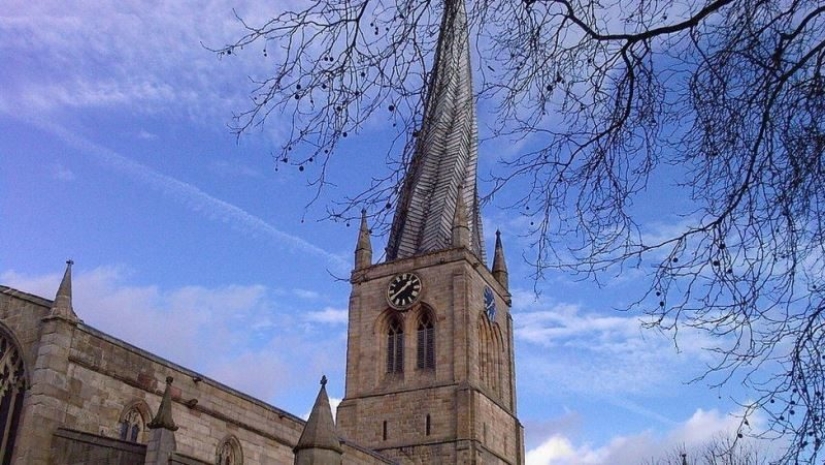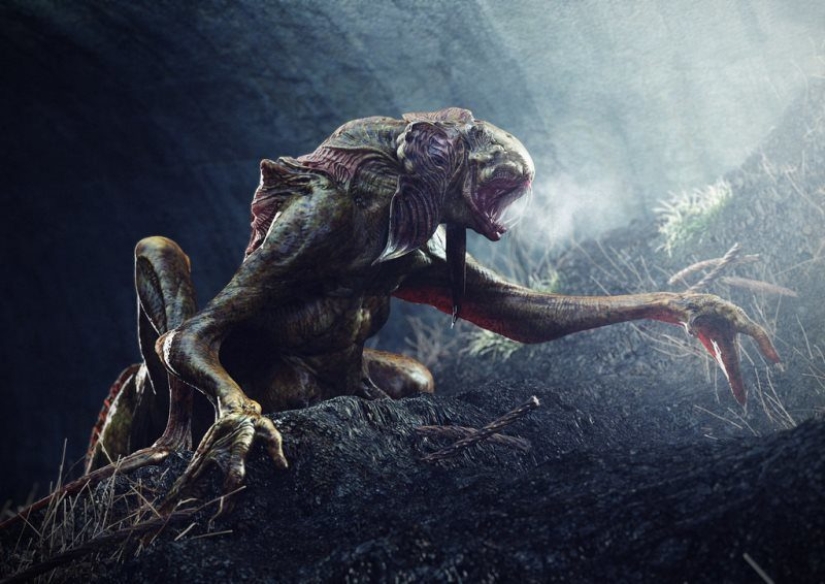British evil spirits, as it is: what the people of the United Kingdom are afraid of
Categories: Europe
By Pictolic https://pictolic.com/article/british-evil-spirits-as-it-is-what-the-people-of-the-united-kingdom-are-afraid-of.htmlThe ancient mythology of England, Scotland, Ireland and Wales is multifaceted and bizarre. Local tribes and peoples, as well as numerous guests, invited and not so, have contributed to the formation of local legends, beliefs and customs. Even the rather harsh approach of the Anglican and Catholic churches, which have been struggling with local superstitions for centuries, has not had the proper effect and, regularly attending church services, the islanders do not forget to leave offerings to the spirits on special days.

Despite the relatively modest territory, Great Britain and Ireland have given shelter to a huge number of evil spirits. There are more than 50 well-known "bad" places on the islands alone. If we take into account that in every city, town and village you will be shown their anomalous and demonic zones, then the possibility of carrying out a full accounting of all hellish places and their inhabiting creatures is doubtful.
We have selected the most popular English and Scottish legends that will help create the mood.
Many centuries ago, an elderly woman Megan from the town of Khlandunakh, got into an unpleasant story. Because of the flood of the river, the big water separated her from the cow — the only breadwinner of the family. The old woman, sobbing with despair, was in despair, but, suddenly, a soft male voice obeyed behind her: "What happened, Megan?" The woman saw a handsome wandering monk who, because of the noise of the flood, approached completely unnoticed.
Megan told the wanderer about her trouble, and he promised to help. The monk said that he would build a bridge across the river, but in return he would take away the first living creature that would use it. Looking closer, the old woman saw that the monk's knees are located behind, and the tip of the tail is visible from under the cassock. Despite the fact that she recognized the devil, she did not give a sign and agreed to the condition.

As soon as the demonic forces erected a stone crossing over the stream, the cunning grandmother threw a piece of bread onto the bridge, after which a stray dog rushed. The unclean animal didn't need anything, so he disappeared with curses in a cloud of sulfur, leaving the smell of sulfur and an excellent arched stone bridge, which can still be seen today.
The curved and corkscrewed spire of the Church of St. Mary and All Saints in the ancient city of Chesterfield, Derbyshire, if you believe the words of the locals — this is not the negligence of the architects, but the machinations of the devil. When the cathedral was built, demonic forces tried their best to prevent its opening, arranging all sorts of problems. When the arsenal of dirty tricks was exhausted, and the townspeople did not even think to give up, the last trump card was launched.

Satan himself sat on a brand-new church steeple and wrapped his tail around it for greater reliability. But the Chesterfields did not lose their heads and held a prayer service with a bell alarm. The chime frightened the evil spirits, and the Enemy of the human race darted away from the spire. At the same time, Satan forgot about the tail and, spinning around the bell tower, he turned its roof into a screw.
Saint Dunstan enjoys special honor in all corners of Great Britain. The elder was ascetic even before the conquest of England by the Normans, in the X century, and in his old age he received the highest ecclesiastical title of England — he became Archbishop of Canterbury. The merits of the holy father did not allow the devil to live, and he decided to substitute him in any way.

The evil spirits, having changed their appearance, arrived in Dunstan's cell and demanded to shoe a horse. The old man immediately understood what was the matter and, having twisted the guest with prayers, shod him himself. The pain from the horseshoes made the devil beg for mercy, and the saint unshackled his hooves, taking the promise that the demon would never mess up in houses where horseshoes hang over the door.
It is to Dunstan that the whole world owes the custom of nailing horseshoes for good luck. It is known that even Albert Einstein, a man of extremely advanced views, once hung a horseshoe over the door of his house. To the questions of the curious, the great scientist replied that he did not believe in fairy tales, but the horseshoe helps even those who scoff at superstitions.
There are a lot of stones, rocks and cobblestones all over Europe, which, allegedly, the devil dropped when planning another nasty thing. There are especially many of them in Great Britain, where the villages do not get tired of telling old stories about fights with the unclean. Among all such artifacts, one "devil's stone" stands apart in the village of Shebbir in Devon.
Unlike analogues, the Shebbir stone does not just lie, but presses down the devil himself! An ancient custom is associated with this rather large and heavy object. On November 5, residents of Shebbir do not burn an effigy of Guy Fawkes, as it has been done for 4 centuries, but gather together and turn the stone to the other side.

The stone weighs about a ton and it is very difficult to even move it, let alone turn it over. Once, during the Second World War, the villagers did not perform the ritual, deciding that the war was not the time for strange rituals. Soon after, reports from the fronts became so bad that the stone had to be turned over after hours.
If the superstitions of the Christian era are a little monotonous, and the devil and his unexpected winner appear in them, then the mythology of the Celtic period is more diverse and truly chilling. The legends of that time are characterized by ingenuity in describing the appearance of evil spirits, as well as intricate ways to deal with it, without the use of bell ringing and church utensils.
Most likely, it was the legends about the Black Shak that inspired Sir Arthur Conan Doyle to create the "Hound of the Baskervilles". Only here the Black Jack lives in the east of England, in Essex, and the writer moved her to the western part of the country, in Devon.

Unlike the animal that terrorized the inhabitants of Baskerville Hall, the Black Shak could be not only dangerous, but also friendly. Those lonely travelers who did not panic and did not rush to run when a black dog the size of a horse appeared had a good chance to survive and even caress the monster.
The English equivalent of our water, dragging and drowning children who came close to the reservoirs. In the towns and villages of Britain, the mention of this monster had an educational moment — they simply scared the minx. These monsters have pale green slippery skin, small and sharp teeth, webbed feet and were very agile both in water and on land.

This is one of the strangest, ugliest and most ruthless monsters, from which it was almost impossible to escape. Its habitat is the Orkney Islands in the north of Scotland. Naklavi is similar to a black horse, but a creepy human torso sticks out of his back with clawed paws to the ground and a round toothy head.

The most terrible thing is that the monster has absolutely no skin, and all the anatomical details of the strange body are perfectly visible. There is no justice on Naklavi, and anyone who meets him is waiting for a terrible death and eating. Only the Mother of the Sea can cope with the monster, but the help of this good fairy is seasonal — she can respond only in the warm season.
Recent articles

Winter is a special time of the year, someone is afraid of her, someone is waiting for snow days to build a snowman or go down the ...

The heroes of their photos are used to humiliate others, cheerfully and carelessly shoot everything on the phone and post the ...

Every day, photographers around the world are looking for new ways to tell stories or capture something we haven't noticed ...